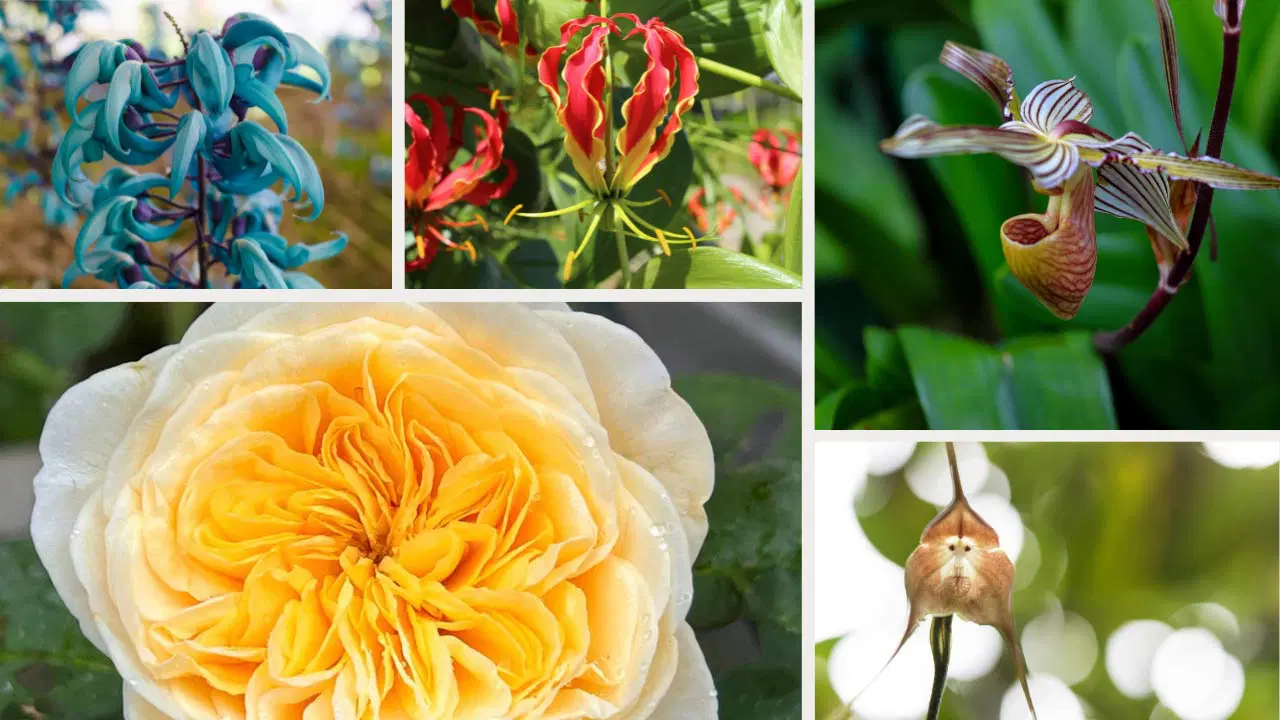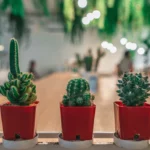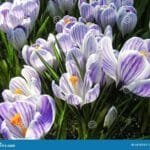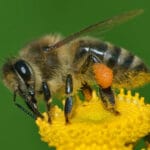Picture this: flowers so rare and delicate, they’re like little secrets whispered by nature. These hidden blooms thrive in hidden corners of the Earth, where they have learned to adapt and survive against all odds. Join us as we journey into these floral sanctuaries, uncovering the mysteries of these botanical wonders. Discover the unique traits that make each bloom so special, and learn about the fragile ecosystems they call home. Prepare to be amazed by their intricate beauty and the unwavering spirit that drives their survival. As we explore these hidden treasures, we’ll also explore the need to protect them, for they are irreplaceable wonders that enrich our planet’s tapestry of life.
Rare Flower Species and Their Habitats
Have you ever thought about how some flowers manage to grow in the most unexpected places—those spots that seem too harsh or unforgiving for anything to survive? We’re talking about rare flower species, the tough survivors of the plant world that have found incredible ways to thrive in some of the planet’s most extreme environments.
These botanical wonders aren’t just pretty faces; they’re essential parts of their ecosystems, often found in isolated pockets around the globe. Their survival is a testament to the power of adaptation – a reminder that life finds a way even in the face of adversity.
Think about a cactus in the desert. Those prickly spines aren’t just for show; they’re modified leaves, perfectly designed to conserve water in an arid landscape. Some desert flowers only bloom for a short time after it rains, making the most of that precious moisture. Others have roots that burrow deep underground, seeking out hidden sources of water.
Now, picture a mountain meadow high above the treeline. You might find flowers with thick, furry leaves, almost like they’re wearing little coats to protect themselves from the cold and wind. These adaptations are crucial for their survival, allowing them to soak up sunlight and bloom even in challenging alpine conditions.
But these rare flowers aren’t just tough; they’re important players in their respective ecosystems. They provide food for pollinators like bees and butterflies, their seeds help plants spread and diversify, and they contribute to healthy soil. Their presence, often in fragile and unique habitats, is a sign of a thriving and balanced natural world.
Unfortunately, many of these rare beauties are under threat. Habitat destruction, climate change, and even things like people picking flowers can disrupt their delicate balance. That’s why understanding and protecting these floral treasures is so important. Scientists are hard at work studying these rare plants, trying to understand how they survive and what we can do to help them thrive. Conservation efforts, from protecting natural areas to educating the public, are crucial for ensuring that these rare flowers continue to exist for generations to come.
Exploring the world of rare flower species is a journey into the incredible diversity of life on Earth. It’s a reminder of the interconnectedness of nature and the importance of protecting even the smallest and most delicate species. These flowers, with their beauty and resilience, urge us to safeguard our planet’s precious biodiversity.
What is the Rarest Flower on Earth?
We’ve already talked about some amazing flowers, but let’s dive into the world of REALLY rare blooms! Some flowers are so rare that seeing one is like finding a hidden treasure. The current champion for the “rarest flower” title probably goes to the Middlemist Red Camellia. Imagine a flower so rare that there are only two known examples left on the entire planet! That’s the reality for this beautiful flower, which holds the official Guinness World Record for its rarity.
Why are there so few Middlemist Red Camellias left? A big part of it is that their original home in China faced a lot of development, which sadly pushed them out. Plus, these flowers are a bit picky when it comes to reproducing – it’s not as simple as just scattering some seeds! Luckily, the two remaining Middlemist Red Camellias, one in New Zealand and the other in the United Kingdom, are carefully looked after, giving us hope for the future of this incredible plant.
But the Middlemist Red Camellia isn’t alone in its struggle. Many other stunning flowers are facing an uncertain future. Take the Jade Vine, for example. This beauty from the Philippine forests boasts breathtaking cascades of emerald green flowers, but sadly, it’s becoming harder and harder to find in the wild. Then there’s the mysterious Youtan Poluo, a tiny parasitic plant that needs specific host trees to survive. With those trees disappearing, the Youtan Poluo is facing an uphill battle. And let’s not forget the Chocolate Cosmos—imagine a flower that smells like actual chocolate! Sadly, this sweet-scented wonder is also on the verge of disappearing from our planet.
So, what can we do? Thankfully, a lot! Dedicated people and organizations worldwide are working hard to protect these botanical treasures. Groups like the IUCN Red List are like watchdogs for endangered plants (and animals), keeping track of their numbers and raising awareness. They play a vital role in guiding conservation efforts. Meanwhile, scientists and conservationists are getting their hands dirty with projects to restore natural habitats, create seed banks to preserve genetic diversity, and even carefully breed endangered plants in controlled environments. Every effort counts!
Now, let’s not forget about the human touch in all of this. Believe it or not, we humans have played a part in creating rare flowers, too! Through careful breeding, we’ve brought to life extraordinary blooms like the Juliet Rose. This rose, crafted by the renowned breeder David Austin, is a testament to the artistry of horticulture. With its beautiful form, intoxicating fragrance, and limited availability, it has become one of the most sought-after and expensive roses on the planet. It shows how we can be both creators and caretakers of the plant world.
Rare flowers are more than just pretty faces. They’re a crucial part of our planet’s biodiversity, playing unique roles in their ecosystems. Plus, they bring us joy and wonder, reminding us of the incredible diversity and beauty of the natural world. It’s our responsibility to protect these delicate treasures and ensure that future generations have the chance to marvel at their splendor. So, the next time you encounter a flower, take a moment to appreciate its beauty and remember the importance of protecting our planet’s incredible biodiversity.
What is the Rarest Flower Breed?
We’ve already talked about how some flowers are like hidden treasures, right? Well, imagine a flower so rare you’d probably have better luck finding a four-leaf clover in a field of shamrocks! That’s the Middlemist Red Camellia. There are only two known examples of this flower left on the entire planet! One is being cared for in the UK, and the other is all the way over in New Zealand.
Now, you might wonder what makes a flower so rare. Think about it like this: sometimes a flower is picky about where it lives, like it only wants to grow in one very specific spot. Take the Black Bat Flower, for example. This mysterious beauty only grows in the rainforests of Ecuador. Other times, it’s like trying to bake a complicated cake – some flowers are just really, really hard to grow, even if you have all the right ingredients! The Chocolate Cosmos is a good example – it’s a real looker, but getting it to grow from a seed is about as easy as winning the lottery!
So, if someone asks you about the rarest flower in the world, you can confidently tell them it’s the Middlemist Red Camellia. It’s like the celebrity of the flower world – everyone’s heard of it, but almost no one has actually seen it! This incredible flower reminds us how important it is to protect the amazing diversity of life on Earth.
But the Middlemist Red Camellia isn’t the only rare flower out there. Here are a few others you might never see in person:
- Brugmansia vulcanicola: This delicate beauty is only found on the slopes of a volcano in the Andes Mountains. Talk about a tough cookie!
- Cayman Sage: This little flower is doing its best to survive on a tiny island in the Caribbean. It’s a reminder that even the smallest things can be incredibly precious.
Scientists and plant lovers are working hard to protect these rare flowers. They’re trying to save their habitats, collect and store seeds, and teach people about how important it is to care for our planet. Who knows what other amazing discoveries are waiting for us in the plant world? Maybe you’ll be the one to find the next rare flower!
What is the Most Unusual Flower?
We’ve talked about some cool flowers, but let’s dive into the world of the truly bizarre. You know how some flowers just make you do a double take? The one that often tops the list is the black bat flower (and for good reason!). This flower, found hanging out in the rainforests of Southeast Asia, looks shockingly like a bat in flight. Seriously, it has these long, droopy things called “stamens” that look just like whiskers. Apparently, it’s all a clever trick to attract pollinators who think they’re going for a visit with a real bat!
Sadly, a lot of these unusual flowers are facing some big challenges just to survive. We’re talking about things like habitats disappearing, the climate going haywire, and even people digging them up because they’re so rare! Take the Middlemist Red camellia, for example. This flower is so rare that there are only two known examples left on the entire planet! They used to be common in China, but habitat destruction and too much cross-breeding with other camellias really did a number on them.
This is why it’s so important that we protect these botanical oddities! Thankfully, there are people working hard to save them. Groups are doing things like restoring habitats, creating “seed banks” to store seeds for the future, and just making people aware of how fragile these flowers are. Botanical gardens and seed banks are like safe havens for these endangered blossoms, giving them a fighting chance and making sure their unique genes don’t disappear forever.
Think about it: these rare flowers are like little masterpieces, each with its own story of adaptation and survival. The more we learn about them and the dangers they face, the more we can do to make sure they’re around for future generations to gawk at. Let’s all do our part to appreciate these beauties and support the efforts to protect them!
Citation:
The Rarest Flowers in the World and Why They’re Disappearing
What is the Most Exotic Flower?
Picking the most exotic flower is like trying to choose the best song ever – everyone has their own taste! Some folks are drawn to bright colors, others to crazy shapes, and some people just love a whiff of something truly unique.
We’ve already talked about a few contenders, but let’s dive a little deeper into what makes them so special – and why saying something is “rare” can be a bit tricky.
The Ghost Orchid: More Phantom than Flower?
Imagine walking through a Cuban forest and spotting what looks like a wisp of smoke clinging to a tree. That’s our Ghost Orchid (Dendrophylax lindenii), a flower that seems to defy logic. It has no leaves, you see, so when it’s not in bloom, it’s practically invisible. This sneaky orchid gets its nutrients from the air and rain, making its home in humid forests where it’s always kinda damp.
Sadly, there aren’t many Ghost Orchids left. Habitat loss is a big problem, and because they’re so tricky to cultivate, they’re often poached from the wild. Scientists are working hard to protect them, though, and learning more about how they thrive in these specific environments.
The Juliet Rose: A Love Story 15 Years in the Making
Now, if you’re looking for a flower that screams romance, the Juliet Rose (Rosa ‘AUSpit’) is your gal. This beauty has it all – a gorgeous deep red color, velvety petals that beg to be touched, and a scent that’s like falling in love for the first time.
But here’s the thing: creating the Juliet Rose took breeder David Austin over 15 years! It’s said he poured millions into getting it just right. This, combined with its limited production (only about 10,000 blooms a year!), makes the Juliet Rose one of the priciest flowers you can buy.
The Middlemist Red Camellia: A Survivor’s Tale
For a while there, folks thought the Middlemist Red Camellia (Camellia × williamsii) was gone for good – extinct. Thankfully, they were wrong! This flower, with its fiery crimson petals that look like they were painted by a master, is still hanging on, though by a thread.
There are only two known specimens left in the entire world, one carefully tended to in New Zealand and the other in the UK. That’s right, two. The Guinness World Records even calls it the rarest flowering plant! Why so few? Well, the Middlemist Red Camellia is notoriously fussy about where it grows, and even pollination is tricky. Researchers are studying these plants closely to understand their needs and, hopefully, one day, bring them back from the brink.
A Note About Rarity
When we call a flower “rare,” it doesn’t always mean there are only a handful left. It could be that they only grow in a very specific part of the world, or that they bloom for a very short time. Or, like our Juliet Rose, they might be tricky and expensive to cultivate.
The important thing to remember is that all of these flowers, rare or not, play a vital role in their ecosystems. They remind us of the incredible diversity of life on Earth – and the importance of protecting it.
What is the Number 1 Most Expensive Flower in the World?
So, we’ve been talking about some pretty fancy flowers, right? But buckle up, because when it comes to the absolute crème de la crème, the Gold of Kinabalu Orchid takes the cake. This isn’t your average grocery store bouquet, folks. This rare beauty hangs out on the steep slopes of Mount Kinabalu in Malaysia, and good luck finding one! It needs super-specific conditions to grow, like special soil you won’t find just anywhere, not to mention being near rivers and cliffs. All this exclusivity means one stem could set you back a cool $6,000.
Now, if we’re talking about sheer record-breaking prices, the Shenzhen Nongke Orchid blows even the Gold of Kinabalu out of the water. Imagine dropping a whopping $290,000 AUD on a single flower! That’s what happened at an auction back in 2005. What makes this orchid so special? Well, it’s actually entirely human-made, the product of years of dedicated research at Shenzhen Nongke University. Talk about playing Mother Nature!
And let’s not forget about the queen of roses, the legendary Juliet Rose. This delicate beauty made its grand debut at the prestigious Chelsea Flower Show in 2006, and it caused quite a stir. Why? Because its price tag was a jaw-dropping $5 million! It took years and years of careful breeding and meticulous care to create this perfect rose, making it the holy grail for rose enthusiasts everywhere.
What’s fascinating is that these flowers aren’t just expensive for the sake of being expensive. They represent the pinnacle of their kind, the result of unique environments, scientific breakthroughs, or painstaking dedication to horticulture. It’s almost like owning a piece of art, a fleeting glimpse into the extraordinary world of nature’s rarest creations. No wonder they capture our imaginations and have us dreaming of floral fantasies!
What’s the Hardest Flower to Find?
We’ve already talked about some seriously rare flowers, but buckle up, because some are even more elusive! Imagine trying to find a flower so rare it’s almost like chasing a whisper in the wind. That’s the reality for anyone on the hunt for the Middlemist Red Camellia. This flower is officially recognized by the Guinness World Records as the rarest in the world. Why? Well, picture this: there are only two known examples of this flower existing in the entire world. One is carefully tended to in a garden in New Zealand, and the other resides in a special greenhouse in the United Kingdom. It’s a powerful reminder that the beauty of nature is delicate and needs our protection.
And then there’s the Ghost Orchid, a flower shrouded in mystery. You won’t find this ethereal beauty just anywhere! It prefers the humid, shadowy canopies of old-growth forests in Cuba and Florida, making it incredibly difficult to spot. And to make things even more challenging, it has a rather unique trick up its sleeve – it doesn’t have any leaves! This ghostly white orchid seems to appear out of thin air, clinging to tree trunks, its delicate blooms swaying gently in the breeze.
Let’s not forget the Franklin Tree Flower. Imagine a flower so rare it was thought to be extinct in the wild for over two centuries! That’s the story of this beautiful flower, native to a tiny region in the southeastern United States. While we’re fortunate enough to have reintroduced it to some areas, it’s still a rare and precious sight. Imagine its captivating white blooms, bursting with a fragrance reminiscent of honeysuckle – a fleeting spectacle that reminds us of the importance of preserving Earth’s precious gifts.
But why are these flowers so rare? Sadly, there isn’t just one answer. It’s a mix of things, like the destruction of their natural habitats, a changing climate, and even people picking them faster than they can grow back. This is why it’s more critical than ever to protect these natural treasures and their fragile homes.
Discovering these rare flowers is a journey, a quest that takes us to the far corners of our planet, reminding us that there’s still so much beauty left to fight for.
Why is Middlemist Red So Rare?
So, we’ve talked about how special the Middlemist Red camellia is, but why are there so few of them left? Well, a few things have made life tough for this beautiful flower.
First off, they’re picky about where they live. Imagine being really comfortable in your favorite chair, with the perfect lighting and temperature. That’s what the Middlemist Red needs to thrive – acidic soil that drains well and just the right amount of shade. It’s like trying to find a four-leaf clover in a field of green! These conditions are pretty rare outside of their original home in China.
Then, there’s the issue of disease. Sadly, the Middlemist Red is really susceptible to a nasty fungal infection called camellia petal blight. Think of it like a bad cold that can spread through a classroom – this blight can wipe out entire groups of camellias if it takes hold.
And lastly, we can’t forget about the Victorians. They loved their gardens and exotic plants, and the Middlemist Red, with its stunning crimson blooms, became a must-have. This led to people taking too many of them from the wild, which, along with habitat destruction, really hurt their chances of survival.
It’s like a perfect storm of factors that led to the Middlemist Red becoming so rare. But thankfully, dedicated botanists and garden enthusiasts are working hard to protect the remaining plants and grow new ones. They are like plant detectives, studying the best ways to care for them and hopefully increase their numbers. Will this beautiful flower make a comeback? We’ll have to wait and see, but with a little luck and a lot of effort, we might just be able to ensure the survival of this incredible plant.
What is the Rarest Plant to Ever Exist?
Picking the absolute rarest plant is tricky, but there’s a strong contender you’ve probably never even seen in pictures. It’s called the Middlemist’s Red camellia (Camellia ‘Middlemist’s Red’), and it’s not just about low numbers, though those are REALLY low.
Imagine a flower so rare, there are only two confirmed spots on the entire planet where it still grows. We’re talking about a single plant in a special greenhouse in London, and another living its best life somewhere in New Zealand. And that’s it! This isn’t some newly discovered species, either; this camellia was hanging out in gardens back in the 1800s, originally from China.
So, what happened? Well, it seems like a combination of things led to its decline. It could be that people loved it a bit too much, taking cuttings and trying to grow it everywhere until it was hard to find in the wild. Plus, like many plants and animals, changes to its natural environment probably made it harder to survive.
And here’s another thing: even if you could find one, growing the Middlemist’s Red camellia is like winning a gardening lottery. It’s known to be super fussy, needing the perfect conditions to even think about blooming. That’s part of what makes it so fascinating, right?
This one flower, with its bright red color, acts as a giant warning sign for what happens when we’re not careful with nature. It reminds us that whole species can disappear if we don’t pay attention to how our actions affect the environment. The good news is, knowing about this super-rare plant means we can focus on protecting what’s left and maybe even learning to recreate its ideal environment in the future.
What Flower Only Blooms Every 100 Years?
So, we’ve talked about some seriously patient plants, but this one takes the cake! The Puya raimondii, sometimes called the Queen of the Andes, is like the grand dame of the flower world, gracing us with its blooms only once a century. That’s right, this flower waits a whole hundred years to show off its beauty!
Now, you might be wondering, why all the drama? Well, this plant lives way up high in the Andes Mountains of Bolivia and Peru. It’s not exactly a tropical paradise up there. Think harsh winds, freezing temperatures, and just generally not the most hospitable environment for a delicate little flower.
But the Puya raimondii is anything but delicate. This plant is a survivor, a real testament to nature’s ability to adapt and thrive. It can grow to be over 30 feet tall—taller than a giraffe!—with a thick, sturdy stalk that helps it withstand the harsh mountain winds.
And those blooms? They’re not your average daisies. When this plant finally decides it’s time to party, it doesn’t hold back. We’re talking hundreds of greenish-yellow flowers bursting out along the stalk, creating a spectacle that’s truly a sight to behold.
But back to this whole 100-year blooming thing. Scientists believe the Puya raimondii’s slow growth and delayed blooming are directly related to its harsh environment. It simply takes a really, really long time for the plant to store up enough energy to produce those magnificent flowers.
And sadly, this incredible adaptation is also part of what makes the Puya raimondii so vulnerable. Because it takes so long to bloom, any disturbance to its habitat—whether it’s from climate change, human activity, or even just a particularly bad storm—can have devastating consequences for the plant’s survival.
That’s why organizations like the Royal Botanic Gardens, Kew are working hard to study and protect this incredible species. They’re like the bodyguards of the plant world, making sure these rare and endangered plants have a fighting chance to stick around for another hundred years—and hopefully, many more centuries to come.
So the next time you see a flower, take a moment to appreciate its resilience and beauty. And if you ever get the chance to see a Puya raimondii in bloom? Consider yourself incredibly lucky. You’re witnessing something truly rare and extraordinary—a testament to the power of nature and the importance of protecting our planet’s amazing biodiversity.
What is the Rarest Color of Flower?
We’ve already talked about how awesome and diverse flower colors are, but let’s dive into the really rare stuff. You know how some colors are just hard to come by? Well, in the flower world, certain shades are like finding a needle in a haystack. We’re talking seriously elusive hues. And you know what? Black, a color we usually don’t associate with delicate blooms, takes the cake for being one of the rarest flower colors out there.
Think about it: when was the last time you saw a truly black flower? Probably never, right? That’s because very few flowers have evolved to produce that much pigment. It’s like Mother Nature is playing a game of hide-and-seek!
One flower that rocks the black look is the bat flower (Tacca chantrieri). This Southeast Asian beauty has these crazy, bat-wing-shaped petals that are as black as night. And get this – they even have a slightly sweet scent that attracts pollinators after the sun goes down. Talk about mysterious!
Then there’s the black orchid (Dracula vampira) hiding out in the cloud forests of Ecuador and Peru. This orchid is like the vampire of the flower world, with deep black petals speckled with white markings. It’s no wonder orchid lovers go wild for them – they’re like rare gems!
Now, you might be wondering how these flowers even achieve their black magic. Well, it turns out that it’s all down to their genes. These flowers have a special mutation that prevents them from producing anthocyanin, the pigment responsible for most flower colors, like reds, blues, and purples. Without anthocyanin, other pigments like carotenoids and flavonoids get a chance to shine, creating that stunning black effect.
But here’s the catch: these black beauties are in trouble. Habitat loss, climate change, and people plucking them from the wild all threaten their survival. The good news is that conservationists are working hard to protect these rare blooms. Plus, horticulturalists are figuring out how to cultivate them in controlled environments, so hopefully, we can keep enjoying their dark beauty for years to come.
Who knew that flowers were so fascinating? 10 Amazing facts about flowers not only make our gardens beautiful but also have many hidden benefits.
Did you know that some flowers have medicinal properties? Medicinal properties of common flowers can be used to treat a variety of ailments, from headaches to skin conditions.
- Sept 31 Myth: Unveiling Calendar Secrets - March 18, 2025
- How Long & Till December 18, 2025: Accurate Countdown Guide - March 18, 2025
- Discover Japanese Artists: A Complete History - March 18, 2025
















